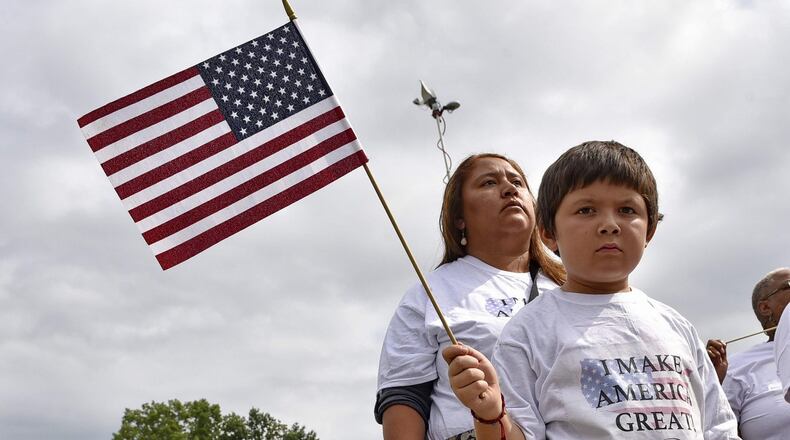The Hispanic electorate will reach a record high in 2016 with more than 27 million people eligible to vote, nearly outnumbering the number of African-Americans in the United States, according to a Pew Research Center report released Tuesday.
But the Hispanic population skews so young that it may not have as big an impact on the elections as some expect. About 44% of the population falls into the millennial category — those born after 1980 — meaning they don’t register to vote or participate in elections as much as their older relatives, the report found.
“While the Latino voter turnout could be lower than expected because of the large share of eligible voters who are millennials, the growing number of U.S. citizen immigrant Latinos may help boost Latino voter turnout rates,” the report stated.
What the report can’t gauge, however, is whether the Hispanic community will be more energized and organized due to the central role immigration is playing on the campaign trial.
Republican front-runner Donald Trump infuriated many in the Hispanic community when he called Mexicans rapists and drug dealers during his speech announcing his candidacy last year. Other Republicans denounced his remarks, but most have followed up by calling for more border security, completing the wall along the southwest border and stepping up deportations of the nation’s 11 million undocumented immigrants.
Tuesday’s decision by the U.S. Supreme Court to consider President Obama’s plan to protect up to 4 million undocumented immigrants from deportation could also play a role in mobilizing those voters. The case, which will decide whether Obama’s plan can start up after a year of being blocked by lower courts, is expected to be decided in June, just as both parties are preparing for their presidential conventions.
Whether the Court upholds Obama’s program or strikes it down, the decision could spur a Hispanic community that has been the fastest-growing demographic group in the country for decades. According to Pew’s report, the number of Hispanics eligible to vote has grown from 7.7 million in 1988 to 27.3 million expected in 2016.
They’re also becoming better educated. From 2000 to 2016, the number of Hispanics who are eligible to vote with a bachelor’s degree or more has increased from 11% to 18%, while the number of high school dropouts has fallen from 32% to 20%.
The report also found big increases in the Hispanic electorate in several presidential swing states that could help decide the election. Hispanics will account for 18.1% of eligible voters in Florida, 17.2% of eligible voters in Nevada and 14.5% of eligible voters in Colorado.
Other findings from the report
- Hispanics have nearly overtaken African-Americans as the largest minority group of eligible voters. Hispanics now make up 11.9% of all U.S. eligible voters in 2016, compared to 12.4% for African-Americans.
- Hispanics have the largest share of its population made up of millennials. About 44% of Hispanics eligible to vote fall into that category, compared to 35% of African-Americans, 30% of Asians and 27% of whites.
- Hispanics and Asians continue to have the lowest voter turnouts among the U.S. population. Only 48% of Hispanics and Asians eligible to vote turned out on election day in 2012, compared to 66.6% of African-American voters and 64.1% of white voters.
About the Author
Keep Reading
The Latest
Featured


